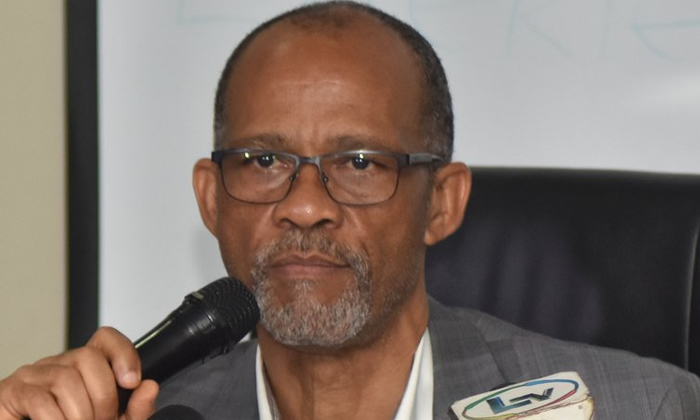A Diphtheria Outbreak in Lagos: A Comprehensive Overview
Lagos State, Nigeria’s bustling metropolis, faced a public health challenge in early 2025 with the emergence of a diphtheria outbreak. Between January 1 and March 27, 2025, the state confirmed 10 cases of diphtheria, prompting a swift and comprehensive response from health authorities. The outbreak, which affected multiple local government areas (LGAs), triggered widespread concern, particularly given the disease’s potential severity. The most impacted LGA was Eti-Osa, a densely populated area known for its commercial activities and diverse communities, with 44 suspected cases reported. Other affected LGAs included Alimosho, Badagry, Ikorodu, Kosofe, Ojo, Mushin, and Lagos Island, each contributing to the overall caseload of the outbreak. Health officials emphasized the importance of early detection, prompt treatment, and preventive measures to contain the spread of the disease.
The Lagos State Ministry of Health, under the leadership of Professor Akin Abayomi, spearheaded the response efforts. Laboratory testing played a critical role in confirming diphtheria cases and guiding interventions. Out of 76 samples tested, 10 returned positive, while 63 were negative. Three additional samples remained pending as of March 26. Tracing the source of infection and identifying potential contacts were also crucial steps in curbing the outbreak. Several key locations were identified as having confirmed cases, including King’s College in Eti-Osa, Lagos State Model School in Alimosho, Lagos University Teaching Hospital in Mushin, De-Emmaculate School in Kosofe, and Gbara Junior Secondary School in Eti-Osa. These locations became focal points for targeted interventions, including vaccination campaigns and heightened public awareness initiatives.
Treatment for confirmed cases was prioritized to minimize the risk of severe complications and further transmission. Twenty-one individuals received Diphtheria Antitoxin treatment, with a significant portion (14 individuals) at King’s College in Eti-Osa. Other recipients included individuals from Lagos State Model School in Meiran and various locations in Alimosho, Kosofe, and Badagry LGAs. All confirmed diphtheria cases were admitted to designated hospitals for comprehensive medical care and isolation to prevent further spread.
Contact tracing efforts were also intensified to identify individuals who may have been exposed to the disease. A total of 118 individuals were identified as potential contacts, with follow-up completed for 100. Eighteen contacts remained pending follow-up as of the latest report. As a preventive measure, 36 individuals received prophylaxis across affected LGAs, further strengthening the containment strategy.
Vaccination remained a cornerstone of the public health response. An extensive vaccination campaign targeted both children and adults to boost immunity against diphtheria. A total of 36,310 individuals were vaccinated, demonstrating the scale and reach of the immunization drive. Of this number, 7,473 were aged 9 to 17 years, while the remaining 28,837 were aged 18 years and above, including 13,633 healthcare workers. This comprehensive approach aimed to protect vulnerable populations and those on the frontlines of healthcare.
Public awareness and community engagement played a vital role in containing the outbreak. Health authorities emphasized the importance of preventive measures, particularly in light of the upcoming Eid-el-Fitr and Easter celebrations. Residents were urged to maintain high hygiene standards, including frequent handwashing, use of sanitizers, and avoiding crowded places. Prompt reporting of symptoms such as cough, fever, sore throat, and red eyes was crucial for early intervention and to prevent further transmission. The public was assured that treatment for suspected cases was available free of charge at designated government health facilities.
The Lagos State government, under the leadership of Governor Babajide Sanwo-Olu, demonstrated a strong commitment to managing the outbreak effectively. The governor’s swift intervention and allocation of resources were instrumental in supporting the response efforts. Collaboration with national and international partners, including the Nigeria Centre for Disease Control (NCDC), World Health Organisation (WHO), and UNICEF, ensured access to technical expertise and resources. This collaborative approach strengthened the capacity of the state to respond effectively to the health crisis.
The collaborative efforts between the Lagos State Ministry of Health and its partners ensured a multi-pronged approach to tackling the diphtheria outbreak. The state government’s commitment to transparency and public engagement was evident in its regular updates and advisories to the public. These efforts aimed to empower residents with information, enabling them to make informed decisions about their health and contribute to the collective efforts in containing the outbreak. The Lagos State government affirmed its dedication to ensuring the safety and well-being of all its residents.


